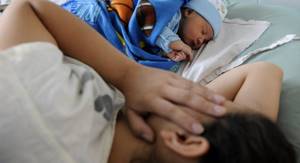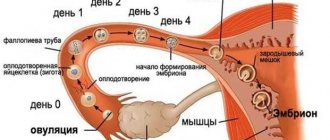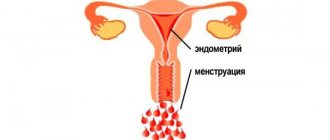The Public Chamber is preparing a resolution on changes to regulatory documents relating to the field of surrogacy. This is necessary to eliminate difficulties in obtaining children by genetic parents, as well as to protect the interests of the women themselves who provide such services. The problem of the weak legal basis for surrogacy was raised earlier, but it became especially acute after the incident with “orphan” babies found in Moscow. Many controversial issues have accumulated: who is considered the mother of a child born to an unrelated woman, why it is difficult for single people to receive this medical care, and, finally, whether men can use the service. All these points need to be clearly explained, experts are sure. The resolution will be sent to the State Duma and the Federation Council for further legislative initiatives.
Surrogate pregnancy is a high-risk pregnancy
Surrogate pregnancies are always high-risk pregnancies. This is due to several reasons. This is mainly due to the use of “donor” eggs, which increases the risk of obstetric complications, including hypertension during pregnancy, low birth weight, gestational diabetes, intrauterine fetal death, preterm birth and the need for cesarean section. It has been suggested that these additional risks may be due to immunological incompatibility between mother and fetus (which is not genetically related to her).
One US study found that on average, surrogate pregnancies (with one or two fetuses) cost 26 times more than non-surrogate pregnancies - due to higher rates of caesarean sections, longer hospital stays and more frequent neonatal intensive care unit admissions.
The UK already has a severe shortage of beds in neonatal intensive care units, which sometimes means that newborn babies have to be transported long distances. For example, in one case a child was transferred from South West England to Edinburgh because there was only ward space available there.
Another risk factor for surrogacy pregnancies is the large number of multiple pregnancies. According to a report from the Human Fertility and Embryology Authority, multiple pregnancies on average double the risk of maternal mortality, preeclampsia, obstetric hemorrhage, gestational diabetes, preterm birth, low birth weight and cerebral palsy. For this reason, the Authority launched the “Only One at a Time” campaign, which was able to successfully reduce the rate of multiple pregnancies resulting from IVF in the ten years to 2017.
Despite these significant and known risks, twins in surrogacy are inexplicably presented as some kind of optional extra - the same goes for the Law Commission's proposals. For example, paragraph 3.65 of the advisory opinion states that:
“The surrogacy agreement may provide additional fixed payments to the surrogate for multiple pregnancies, caesarean sections, and for cases where the surrogate will have to undergo additional medical procedures, such as a hysterectomy.”
Such references in passing demonstrate a complete lack of understanding of the serious risks and injuries to which women will be exposed.
In my 20 years as a midwife, I have had several cases of women experiencing life-threatening bleeding after childbirth. This is terrible - a woman is rapidly losing an incredible amount of blood, death can occur very quickly. I witnessed one woman die from bleeding. It was the most terrible incident in my entire career. Even if a woman survives, she may be left with serious long-term complications, including Sheehan syndrome.
During serious obstetric hemorrhage, labor room resources must be focused on trying to save the woman's life. Currently, there are problems of underfunding and insufficient resources for the maternity care system in the UK National Health System. For example, in some cases, one midwife is forced to provide care to several women giving birth at once.
In some cases, the only way to save a woman's life is an emergency hysterectomy. Obstetricians are no longer required to be qualified to perform this operation, so it may be necessary to call a general or gynecological surgeon, which may interfere with another planned operation.
In addition to the devastating consequences for individual women and their families, any increase in surrogacy will have significant and predictable financial consequences for public health care, and it will divert already scarce resources from other birthing women and even surgical patients in general.
Other risk factors include maternal age and parity (number of births a woman has). For example, the statistical risk of maternal death is twice as high after age 35 and three times as high after age 40. Likewise, risks increase as parity increases.
Members of the Law Commission do not appear to understand these big risks and their consequences, let alone propose adequate steps to protect against them - despite the fact that they claim their goal is to make surrogacy safer.
The proposed “consequences counseling” will have little or no impact on the significant risks that women will be exposed to during a surrogate pregnancy. Evidence from numerous published cases shows that counseling rarely provides women with realistic protection.
Some factors that contribute to the additional risks of surrogacy can be reduced or prevented by legislative measures, for example, by prohibiting the transplantation of more than one embryo, introducing restrictions on the age of surrogate mothers and setting a limit on the number of surrogate pregnancies.
The adoption of such legislative standards will highlight the risks involved and may encourage contracting parents and surrogates to exercise greater caution. This will make it more difficult for agencies and client parents to find and exploit vulnerable women. Also, such legislation could stop the exploitation of psychologically vulnerable women who develop something like a surrogacy addiction and agree to multiple surrogacy pregnancies - an exploitation that could be stopped by prohibiting more than one surrogacy pregnancy for one woman.
“There is nothing of mine about these children.”
Photo: courtesy of the heroine of the material
27-year-old Eva from Bashkiria, due to the nature of her work, constantly communicated with parents who used the services of surrogate mothers. “I wrote to biological mothers with a proposal for induced lactation, that is, organizing breastfeeding for women who have not given birth themselves,” the girl explained. That’s how she met her future bio-mom.
I chose my biological parents myself
“I didn’t plan to go to the program. The proposals began to come in while communicating with biological mothers. We became friends with several, and they were ready to sign a contract with me,” recalls Eva.
True, the girl had a minus. At that time, Eva was already a mother twice. And her youngest child was still breastfed. “I said that I would go to the program with pleasure. But I won’t wean my son off the breast just yet. There was one more point: my second pregnancy also happened while breastfeeding. And for mothers this became a decisive argument,” noted the heroine.
Since there were several offers, Eva chose the girl whose story she was very inspired by.
She had uterine cancer as a teenager. And after this, the pregnancies simply did not go to term. There were about six miscarriages, she was not psychologically ready to carry them herself. And so she prayed for surrogate mothers, so that someone could bear a child for her.
Eva didn’t think for a long time: even in childhood, when the girl found out about surrogacy, she decided to do something similar. “If I already have children of my own, if I have health and opportunity, I will help give birth to a child for those who cannot. That’s what I thought,” the girl said. Moreover, her husband supported her. And the parents were not against it.
The girl succeeded the second time. “The first pregnancy was empty: that is, the fertilized egg grew, but there was no embryo in it. I was very worried and felt guilty. But they explained to me that it was just a DNA defect and I had nothing to do with it,” recalls Eva.
But on the second attempt, the first failure paid off doubly. “My biomama persuaded me to implant two embryos. And I agreed. The experience of carrying twins would be useful in my work,” the heroine noted.
Carrying twins
Pregnancy was not easy for Eva. Having twins puts a double burden on the body. But Eva perceived all the trials with optimism, and also managed to charge her biological parents with positivity.
“My first hCG test was high, and I immediately realized that everything was not easy, but it turned out for the best,” Eva noted. After the first failure, reproductive specialists offered the girl constant monitoring of the fetus’s condition. But, after consulting with the biological mother, she refused. We decided to wait until the due date for the first ultrasound.
And already in the ninth week we went for an ultrasound together. The doctor found two babies and found a heartbeat. Mom sat next to me, saw everything, asked questions. She cried, there were strong emotions.
The women experienced all the important events of pregnancy together: Eva tried to help the babies’ mother experience this process on her own in order to be closer to the children. “She even wore a silicone belly to get used to the idea of motherhood,” said Eva.
The surrogate mother informed the biological mother every day about the babies and talked about changes in her well-being. “She tried psychologically to imagine from my audio messages that this was all happening to her,” Eva noted.
There was a moment when I noticed the unusual activity of one baby, while the other was completely quiet. I realized that something was happening and quickly called my mom. She arrived, put her hands on her stomach, and started talking to them. And then one baby calmed down, and the second began to respond to her touch. They loved her even then.
Thus, by the time of giving birth, Eva and her biological mother became real friends.
Nanny for a while
Day X went well. Although the babies were born only at 36 weeks, they were born quite strong. “We immediately started putting them on the bio-mom’s breast, and this brought them even closer together. Then she wrote to me that she truly felt that these were her children: they calm down from her voice, they drink her milk,” said Eva.
View this post on Instagram
A post shared by Eva Gubaidullina (@deva0909) on Jan 16, 2020 at 10:29am PST
But the surrogate mother herself, by the way, does not miss the babies. According to the girl, attachment to a child during pregnancy is an escalation of the situation by the woman herself. Eva imagined herself simply as a nanny: now she is taking care of the boys, and when the time comes, they will go to their mother.
“I once worked as a nanny, and then it was much harder for me to part with the kids. I taught them everything: crawl, walk, talk, eat. I invested so much in them, and it was painful for me to watch when they were sent to the garden,” admitted Eva.
And these children - firstly, I perceived them as work. I often see babies, help put them to the breast, and these children were just another baby. And secondly, how could I want to take them? I already had two children, but this woman has none. This is some kind of terrible selfishness.
By the way, someday the mother will tell the boys about how they were born. “I will also tell my children when they grow older. If they ask, I’ll tell you that I helped another aunt have a baby and she was very grateful for it,” said the surrogate mother.
What did they say
“I don’t hide my story. And sometimes people write to me on social networks that I sold my own children. I send a message to such people, in which I tell them the following: these children are not mine, they are not biologically related to me, our DNA does not even match. And often when a person hears my voice, his perception changes.”
Conflicts of interest in surrogacy
Under the proposed “new path,” ordering parents would be considered legal parents immediately after the child’s birth. This will inevitably lead to the fact that the ordering parents will consider themselves intrauterine owners - this will lead to huge conflicts of interest, which, among other things, will complicate the work of midwives and other medical personnel.
The Law Commission did not seem to consider these consequences at all. At the moment, the hospital rules are very clear - the patient is the woman in labor, and the medical staff is responsible to her, all rights belong to her. Any changes to this fundamental principle could lead to grave violations of human rights.
But if these proposals are accepted, the situation will become ambiguous. The consultation document suggests that ordering parents should have the right to be present at ultrasound scans and consultations with doctors during pregnancy and childbirth, and mentions that ordering parents have complained about hospitals prohibiting their presence. But in reality, everything is not as simple as this document suggests. The very existence of these complaints suggests that the ordering parents are prone to unreasonable demands and may treat a pregnant woman as their property - even if this is contrary to current legislation and hospital rules.
In my personal opinion, parent clients should never be present during ultrasound scans because it is a real conflict of interest.
Suppose the scan shows that the child has a condition that is not life-threatening or can be corrected surgically, such as a cleft lip or cleft palate, and the requesting parents insist on an abortion.
If the ordering parents are nearby when this information is conveyed to the birth mother, it will be very difficult for her to make an impartial decision about further actions. This would be a violation of her right to independent decision-making and would potentially put hospital staff in an extremely difficult position. Similar situations can arise at any stage of pregnancy and childbirth.
The Commission suggests that requesting parents become legal parents before the umbilical cord is cut. If so, who will decide when to cut the umbilical cord? What about the placenta, which is fetal tissue?
In surrogacy, by definition, there is an imbalance of power - the ordering parents are usually much richer, more educated, and are accustomed to demanding and getting what they want, in contrast to the woman who endures pregnancy and childbirth for them.
I had two consultations with parent clients, and their ambition and sense of ownership was simply incredible. One man argued that there should be no limit on surrogacy pregnancies per woman, because some women give birth to 15 children. He was not at all worried about the realities of pregnancy and childbirth and the possible consequences for women; it was creepy and made him involuntarily think about whether such a person should be a parent.
These types of people can be very difficult to deal with. They are used to pushing until you bend under them, they waste so much of your working time that sometimes it is easier for you to agree just to get them to leave, because otherwise you will not be able to do your job - caring for a real patient.
Midwives are taught to be advocates for their patients and to always put them first. I expect that such behavior will cause strong resistance from them, but there is a risk that such legislative innovations will prevent them from protecting the interests of patients.
If hospital staff deal with such requesting parents during a difficult birth, the consequences can be enormous, and this is radically different from the situation when during labor there are close people nearby who are worried about the well-being of the woman as much as the well-being of the child .
Child from a surrogate mother

Very often, many expectant mothers have questions about a surrogate child. Genetic mothers worry that the genes of the surrogate woman may be passed on to the child. That various diseases during childbirth, vaginitis, can also have a detrimental effect on the child. If the egg of the real mother was used, then the surrogate woman will not affect the development of the baby in any way. Even theoretically, a surrogate mother cannot influence the growing fetus of a genetic mother with her genes.
Surrogate child: health risks
There is a very important fact that can negatively affect the development of a child, such as drinking, smoking, and drugs by the surrogate mother. Poor and unhealthy diets can also have a terrible impact on your baby's development. This behavior is very difficult to trace and is one of the negative factors of surrogacy. Here you need to rely on the conscience of a woman who will bear the fetus for nine months.
From a psychological point of view, if we compare adoption and surrogacy, then in any case the second option is much better. Since a child born this way is more close. The baby will feel comfortable being in a family. But for many genetic parents, a surrogate child born in this way affects the psyche. But sooner or later, parents get used to it and treat such a baby as their own.
Get a free doctor's consultation
As mentioned above, those parents who cannot give birth to a child in the usual way resort to this surrogate method. And this method has never let anyone down. Various psychological disorders that beset parents regarding a surrogate child pass over time and the family lives happily ever after.
Medicine in our time has stepped much forward and provides many opportunities to solve many problems for many sick people. At the same time, surrogate birth of children is an achievement in the field of medicine.
But we must always remember that genetic parents, a surrogate child and a mother are unique components in the field of reproduction. As the surrogate child grows and develops, he may ask questions about his birth, which is a sensitive moment for genetic parents. Real parents have a question: tell their child the truth, or keep silent about their birth. Some parents are sensitive to this moment.
Violations of children's rights
We know of many terrible cases of violations of children's rights from other countries. In one case in the US state of Pennsylvania, a young man ordered a surrogate child, and at the age of six weeks the child died from severe physical abuse. In another case, Peter Truong and Mark Newton ordered a surrogate child from Russia, brought the newborn boy to the United States and sexually abused him for six years. The case of “Baby Gammy,” a child with Down syndrome born through surrogacy, was widely reported. The ordering parents abandoned the boy and left him in Thailand, but took his sister to Australia, despite the fact that the ordering father is a convicted pedophile.
There is no reason to believe that something similar will not happen in the UK if the proposed amendments are adopted.
Under current standards, midwives, like any other health professional, are trained in child protection. But with surrogacy, the likelihood of coercion, human trafficking and other abuses increases significantly, especially if amendments are passed to allow commercial surrogacy.
The Commission does not pay due attention to these issues.
It turns out that midwives must deal with all of these additional risk factors without additional training or resources. There is a need for thorough screening of requesting parents, similar to screening of potential adoptive parents, before they can enter into a surrogacy agreement.
Abandonment of a child by the ordering parents
The consultation document argues that giving the ordering parents legal parental rights from birth will somehow protect the surrogate mother in the event that they abandon the child. But this is an opinion based on misconceptions.
I knew one woman who got out of her hospital bed after giving birth and left the hospital. If this happens, the child is cared for in hospital until social services can place the child in a foster family or, if necessary, place the child for adoption.
In the UK it is very easy to give up your baby immediately after birth, at least from a practical point of view. Paragraph 8.24 notes that if the ordering parents abandon the child, the situation is no different from the case when the parents abandon the child after a normal pregnancy. The award of parental rights to the requesting parents does not offer the surrogate mother any additional protection. Rather, she is deprived of the protection that she currently has.
“I felt uneasy because I was so healthy”

Photo: courtesy of the heroes of the material
32-year-old Maria from Krasnoyarsk is raising three children - two boys and one girl, whom the family took from an orphanage a year ago. After this, parents began to think about increasing their living space. “And then I saw an advertisement on Instagram for an agency that dealt with surrogacy. She made me think,” said Maria.
Search for an agency
At first the idea seemed simply wild to the girl. But it was attractive that Maria could not earn such a sum in a regular job even in a year. In addition, the husband and parents, after some deliberation, supported the girl.
First, I figured out all the details of surrogacy. Then I started googling agencies, reading reviews and at the same time thinking about the very idea of joining the program. And then I thought: why not? I already have my own children, I have health, I have the opportunity to help both my family and parents who have been dreaming of a child for a long time.
The search for an agency ended with the conclusion of an agreement with a Krasnoyarsk company. And then everything is simple: several stages of checking the health of the expectant mother - both physiological and psychological. In general, nothing bothered Maria: all the tests, except for the very first ultrasound, were paid for by her “employers,” and they quickly introduced the girl to her first biological parents.
View this post on Instagram
A post shared by ❤







